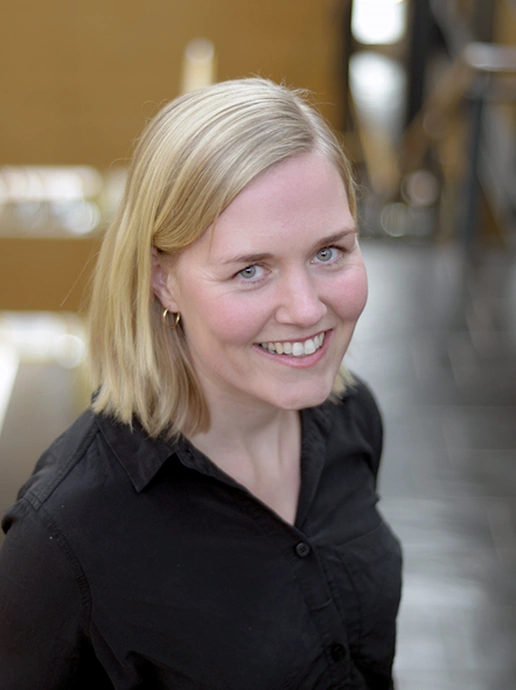Trial lecture - time and place
Adjudication committee
- Associate professor Lulu Song, City University of New York, USA
- Associate professor Perla Gámez, University of Chicago, USA
- Professor Thormod Idsøe, Department of Special Needs Education, University of Oslo, Norway
Chair of defence
Professor Ona Bø Wie, Head of Department, Department of Special Needs Education, University of Oslo, Norway
Supervisors
- Associate Professor Imac Maria Zambrana, Department of Special Needs education, University of Oslo, Norway
- Professor Veslemøy Rydland, Department of Education, University of Oslo, Norway
- Professor Meredith Rowe, Harvard University, USA
Summary
Summary Studies suggest that the features of communication that children experience with adult conversational partners may play a particularly potent role in contributing to their language development (e.g., Golinkoff et al., 2019). Not only is the linguistic input they experience essential, but interactional features, such as whether the adult responds to the child, and conceptual characteristics are also important (Rowe & Snow, 2020). However, most of what we know about the communication features that children experience with adult conversational partners comes from interactions with mothers, who typically have been the caregiver that spend the most time with a child. However, societal changes over the last few decades have increased the time children spend with other caregivers. Today, fathers are more involved in children’s daily lives. Children are also spending a greater part of their day in preschool and consequently with preschool teachers. These shifts beget a need to learn more about the combined communication experiences that children encounter with their fathers and mothers as well as children’s communicative experiences with preschool teachers.
This thesis examines adult–child interactions from the sociopolitical and cultural context of Norway – a society that encourages both fathers and mothers to spend time with their child through welfare services (e.g., parental leave) and where most children are attending publicly funded preschools. More specifically, I have investigated features of father-child and mother-child communication during toy play with two-year-old children and preschool teachers’ interactions with five- to- six-year-old children in pedagogical activities (i.e., toy play, book sharing, story card conversations). For this purpose, I have relied on transcribed video observations that have been subsequently coded for communication features along and across interactional, linguistic, and conceptual dimensions. The results are presented in three articles that I have conducted in collaboration with others. In Article 1, we examined and compared two-year-old children in separate play interactions with fathers (N = 30) and mothers (N = 38). The interactions were analyzed along three dimensions and comprise communication features found to contribute to children’s language development in the toddler years. For the interactional dimension, we examined responsive communication; for the conceptual dimension, we examined levels of abstract talk; and for the linguistic dimension, we examined language complexity and diversity (measured by mean length of utterance in words (MLU-words) and number of different word types).
The results from the paired comparisons of father–child and mother–child communication (N = 29) revealed that the father-child and mother-child interactions were highly similar along all three dimensions, and the correlations across dyads and families highlighted how the communication features varied across individuals, rather than between fathers and mothers per se. The findings are discussed in relation to potentially moderating factors of toy play and Norwegian policy and culture. In Article 2, we investigated dyadic interactions between preschool teachers and five to six-year-old children (N = 38) during book sharing and toy play, focusing specifically on pragmatic aspects of the teacher–child interactions. The results from paired comparisons revealed that the preschool teachers produced higher proportions of questions during toy play than during book sharing and higher proportions of statements during book sharing compared to play. In addition, a larger proportion of their questions were more advanced (i.e., inferential) during book sharing than during play. The results from sequential analysis addressing the moment-to-moment patterns indicated that the preschool teachers were more likely to follow the children’s questions with statements during toy play than during book sharing, which could indicate more “back-and-forth” communication during toy play. We conclude that the two activities may provide children with complementary communication experiences that could contribute to their language development in different ways.
In Article 3, we examined teacher–child interactions in three different activities (book sharing, toy play and story card conversations) to investigate the hypothesis that decontextualized talk – talk that extends beyond the here-and-now – is more linguistically complex than contextualized talk – talk grounded in the immediate context. We found that teacher and child decontextualized talk was more linguistically complex than contextualized talk across activities, as measured by MLU-words, lexical density, elaborated noun phrases and subordinating conjunctions that introduce adverbial clauses. However, both contextualized and decontextualized talk was less linguistically complex during play than during book sharing and story card conversations and the discrepancy in the linguistic complexity of contextualized and decontextualized talk was least apparent during toy play.
The results demonstrate that decontextualized talk is more linguistically complex than contextualized talk but that the type of activity could play a role for the linguistic complexity of the two types of talk. Together, the findings suggest that conversational activities may play a particularly prominent role in shaping the features of communication that children experience, although variations in the communication features of fathers, mothers and preschool teachers suggest that the communication experiences of individual children vary. The findings contribute to the research field by providing further knowledge about the role of context in shaping children’s communication experiences, and the specific focus on adult–child conversations represents an applicable approach that may inform early educators as well as parents in ways to facilitate children’s communication experiences in the toddler and preschool years.
